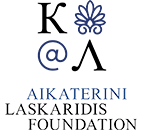Doric order (217 Subjects)
Temple of Aphaia, Aegina.
Promontory of Sunium. From the Sea.
Temple of Apollo Epicurius. Arcadia.
The Temple of Temple of Aphaia, Aegina.
Restoration of the Temple of Zeus at Agrigento, Sicily. On the left the Temple of Concordia and on the right the Temple of Athena.
Outer peristyle of the Temple of Zeus at Agrigento Sicily: Fig. 1: View of crepidoma, base of the column, column, capitals and entablature. Fig. 2. Section plan of crepidoma, base of the column, capitals and entablature. Fig. 5. Plan of column.
Comparison of peristyles from several Doric temples, showing the corner triglyph of each structure, in reference to the architectural question known as Doric corner conflict. A: From the remains of temple close to Delphi, possibly the Tempe of Athena Pronaia. B: From temple at Heraclea, Asia Minor. C, D: From the temples at Priene. E: From Halicarnassus. F: From the Doric Stoa of the ancient Agora of Athens, as drawn by Stuart G: From Selinunte, Sicily. H: From Paestum I: From Knidus.
North east view of the temple of Apollo Epicurius at Bassae, near Phigalia.
Plan of the Temple of Apollo at Bassae.
Elevation of the the front of the Temple of Apollo at Bassae (reconstruction).
Temple of Apollo at Bassae: Plans of the shaft, capital of the column, entablature. Section plan and bottom view of the entablature.
Temple of Apollo at Bassae: Fig. 1: Section through the frieze and cornice. Fig. 2, 3, 4: represent the section and elevations of the tiles and ante-fixae, which were of marble. [...] Fig. 5: Section of the raking cornice of the pediment. Fig. 6: The ornament of the sima more at large.
Temple of Apollo at Bassae. Details of the Doric capitals. Fig. 1: Capital of the Doric order of the peristyles to a larger scale. [...] Fig. 3: Annulets to the full size. Fig. 4: In this ouline are shewn the general principles which appear, on most occasions, to have directed the Greeks in the composition of their Doric capitals. Fig. 5: Capital of the pronaos and posticum. Fig. 6: Details of the annulets and necking of the less order to the full size. Fig. 7: Capital of the antae with the architrave of the order of the pronaos.
Temple of Apollo at Bassae: Longitudinal section through the posticum and opisthodomus of the temple.
Temple of Apollo at Bassae. Details of the Ionic order of the interior. Fig. 1: Plan of the one of the attached Ionic columns with the various projections of the mouldings of the base. Fig. 2: Elevation of the preceding figures. [...] Fig. 3: Elevation of the front of the lower frustum and base of the Ionic columns. Fig. 4: Section to the fourth of the original size of the torus of the base, by which is shewn the peculiar section of the bottom of the flute. Fig. 5: Plan of three of the flutes at large. Fig. 6: Capital and upper part of the shaft. Fig. 7: Plan of the flutes at large. Fig. 8: Plan of the top of the capital. Fig. 9: Detail of the apothesis, fillet and astragal. Fig. 10: Perpendicular section through the eye of the volutes.
Temple of Apollo at Bassae. Corinthian order and other details: Fig. 1: Base of the Corinthian order. Fig. 2: Profile of the torus traced from the original. [...]
Temple of Apollo at Bassae: The Lacunaria.
View of the Propylaea of the Acropolis of Athens.
Plan of Doric temple. Elevation of the peristyle. View and section plan of the capital. Elevation of the front.
View of Doric columns. Plan and bottom plan of Doric columns. View of the capital of the column.
Plan of the Temple of Hephaestus (Thiseion) in Athens. East view of the temple.
Temple of Hephaestus (Theseion), Athens: Bottom view of the peristyle and pronaos, together with details of the ceiling.
The Parthenon: 1. Part of the east side of the temple. 2. Longitudinal section of part of the pronaos.
Part of the south side of the Parthenon. On the metopes scenes from Centauromachy. Interestingly, the author adds to this side a pediment as well.
Plan of the Propylaea of the Acropolis of Athens.
Longitudinal section of the Propylaea of the Acropolis of Athens (from east to west). Imaginary reconstruction of the Monument of Agrippa.
Reconstruction of the Propylaea of the Acropolis of Athens.
The Gate of Athena Archegetis (mod. Pazaroporta), Athens.
Imaginary representation of the Temple of Apollo at ancient Corinth.
Temple of Apollo at ancient Corinth: Plan of the temple (disoriented drawing), the colonnade of the opisthodomos, and view of the capital of the column.































